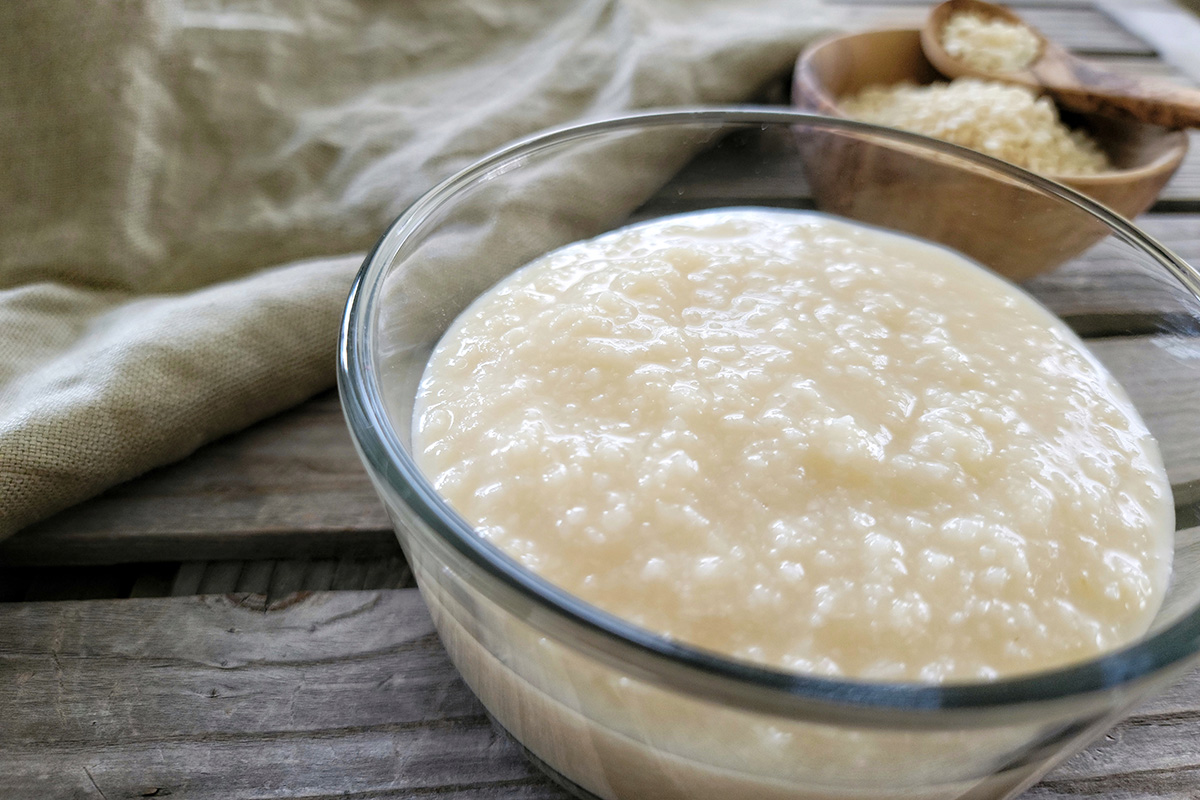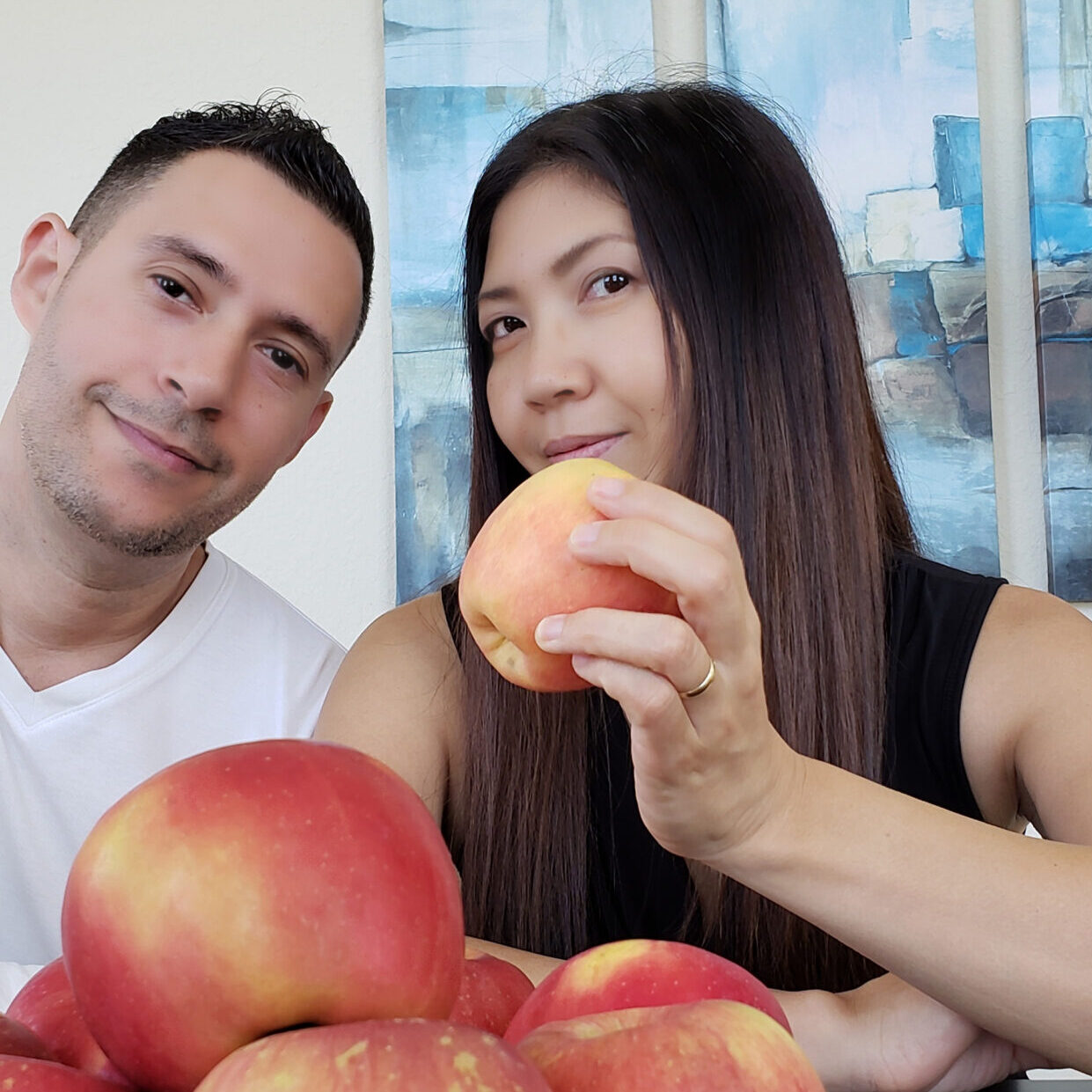Last Updated on June 3, 2021
[塩麹]
If you think soy sauce & miso are the only Japanese seasonings, you will discover something new here! Shio Koji is a type of Japanese fermented seasoning that’s salty & sweet and rich in umami taste. It takes only 3 ingredients to make! You can use as flavor enhancer, marinade, and more! It’s naturally vegan, gluten-free and oil-free.
What’s Shio Koji?
The direct translation of the words Shio Koji is Salt (shio: 塩) + Malted Rice (koji: 米麹 or 米糀). It’s a type of Japanese fermented seasoning (condiment) that is made with salt and malted rice. What’s malted rice? The simplest answer would be rice with Aspergillus oryzae (koji mold). In the process of making malted rice (rice koji), koji mold will be spread over steamed rice and the enzyme of the koji mold induces the rice to be cultured. As a result, the appearance of the final product looks like rice grains with a white moldy (powdery) coating on them.
There are two types of rice koji, fresh & dried. While you could make fresh koji at home (if you are into cooking & science, this is a fun project for you), I simply purchase dried rice koji and make shio koji.
To make shio koji, all you have to do is to mix 3 simple ingredients: rice koji (malted rice), salt and water. Stir once a day and repeat for 7-14 days (depending on temperature) then you can have your homemade shio koji. You can also purchase ready-to-use shio koji but the homemade one is always the best! What does it taste like?
The Taste of Shio Koji
Whether you make your own or buying one, shio koji has a universal taste of;
- Salty
- Sweet
- Umami
It’s not something you eat by itself for sure. But it’s actually a versatile ingredient that you can use as marinade and/or secret flavor enhancer. Yes, it’s quite salty like miso however you can really taste the natural sweetness of rice with umami-rich tones in the background. Although it’s fermented, it doesn’t have a strong smell or odd consistency.
The Consistency/Smell
It’s somewhat thick similar to a consistency of rice porridge. The malted rice grains are completely broken down so they are tender. It’s creamy white in color. Unlike some other fermented foods that has distinctive smell, the smell of shio koji is very pleasant with a faint smell of yeast.
What to Use Shio Koji For?
When using as marinade, it will not only season the ingredients but also tenderize whatever you’re marinating. I mostly use it for a secret (hidden) ingredient to add some sweetness and umami. For example;
- Cooking Japanese rice (starchy short grain rice) with shio koji — it tenderizes the rice and adds a hint of saltiness & sweetness
- Adding to soups — it will add a touch of sweetness and depth
- Adding to stir-fry — ditto
- Using for sauces — it works very well especially for making Japanese pasta sauce
In summary, I use it when I want a little something to enhance the flavor with a hint of sweetness which is one of the elements of Japanese cuisine. Have you seen recipes calling for soy sauce or miso as an umami enhancer? You can try using shio koji instead! The possibilities are endless and easy to make. Why not try today?
The Ingredients
Here is the list of ingredients to make shio koji at home.
- Dried Malted Rice
- Fine Sea Salt
- Purified Water
Yes, it really takes only 3 ingredients!
The Tips and Recipe Notes
Here is the breakdown of the making of shio koji.
Dried Malted Rice (rice koji)
If you have a major Japanese grocery stores (or Asian stores) in your neighborhood, you may able to fine one there. I personally get it from online grocery stores for convenience and quality control. There are two forms of dried malted rice, block or separated, and both works equally fine for making shio koji.
The one I used is this Dried Malted Rice from Umami Insider.
This particular one is a product of Japan. The rice that’s used in it is grown in Okayama and Hiroshima, Japan. The product weight is 17.6 oz (500 g) which is more than enough to make 2 batches of shio koji (I typically use 7.1 oz [200 g] to make 1 batch.)
I love this new discovered online Japanese specialty grocery store. They carry really good quality products and they’re all authentically Japanese. For a cook like me, who cares a lot about the origin of ingredients and the quality of it especially making authentic Japanese dishes, it’s a perfect place to look for certain ingredients. I have bought many interesting products from Umami Insider and I haven’t found anything that doesn’t meet my expectations!
Go to our Resources page for a promo code to get 10% off (US and Canada only)!
How to Prepare
- You will need a clean non-reactive container with a lid such as glass food storage container. In the container, place the rice koji. If using block one, make sure to separate each grain to get rid of any lumps.
- Then, add sea salt and mix. Use fine sea salt for making shio koji.
- Add purified water and mix well. Put a lid on but leave it partially open (don’t cover tightly) and keep in a dry & cool place and avoid direct sunlight.
- Stir once a day and put the lid back on (partially open.) Repeat the process for 7-10 days (in hot summer) or 10-14 days (in cold winter.)
- Tightly cover the container and store in a fridge and consume within 4-6 months.
The Formula
The widely used formula for making shio koji is below:
- 200 g dried molted rice (rice koji)
- 4 tbsp / 60 g fine sea salt
- 250 ml / 1 cup water
I use a scale to measure each ingredient in weight rather than cup measurement for accuracy.
About Water
I live in a warm climate (pretty much summer all seasons) so I use room temperature water for this recipe and it still worked fine. If you aren’t sure, use 60 C° / 140 F° water instead to start the fermentation process properly. I’ve done the warm water method in the past. Are there any differences in the result? Not really but maybe in the smell. In my opinion, the warm water method has somewhat stronger yeast-y smell which is clearly a good sign of proper fermentation.
Fermentation Process
Here is the day-to-day log of the progression of shio koji.










Tips
- As the rice koji soaks up the water, it may look dry on the second day however by the third or fourth day, the consistency should change as it starts fermenting.
- If still looks dry, try adding 1 tbsp water at a time then mix. Observe to see if it changes.
- For warmer climate or during summer, you can use room temperature water. For colder climate or during winter, try using warm water at 60 C° / 140 F° to start the fermentation properly.
Shio Koji
Ingredients
- 200 g dried malted rice (rice koji) (about 1 1/4 US cup)
- 60 g fine sea salt * (4 tbsp)
- 250 ml purified water *
Instructions
- In a clean 3 1/2 – 4 cup glass container with a lid, combine dried malted rice and sea salt. Mix well.
- Add water to the mixture, mix well. Put a lid on but leave it partially open (don't cover tightly.) The reason for leaving it cracked open is so that shio koji mixture can breathe during the process of fermentation. Keep it in a dry and cool place and avoid direct sunlight. Let it rest until the next day.
- Next day, open the lid and stir well with a clean utensil. Cover it again (leave it open partially) and keep it in the same condition.
- Repeat the process for 7-10 days (in summer) or 10-14 days (in winter.) It starts off looking separated, then the rice koji soaks up the water and looking somewhat dry, then the rice starts breaking down. As the fermentation progress, it should get thicker with a faint smell of yeast like bread. The consistency should be similar to rice porridge and the grains should be tender enough to mash with fingers.
- When the fermentation period is over, put the lid tightly and store in a fridge. Consume within 4-6 months.
Notes
- For the best result with accuracy, I recommend using a scale to measure each ingredient. Cup measurements can be less accurate.
- As the rice koji soaks up the water, it may look dry on the second day however, by the third or fourth day, the consistency should change as it starts fermenting.
- For warmer climate or during summer, you can use room temperature water. For colder climate or during winter, try using warm water at 60 C° / 140 F° to start the fermentation properly.
- It has a relatively long shelf-life due to the high level of sodium content (just like miso.) Mine typically lasts 4-6 months without any problems.















Hi Akiko and Peter, I’m in the process of attempting at making Shio Koji for the first time and I am really looking forward to see how it taste like. I do have one question, do you know if it’s ok to use a hand blender in order to smooth the texture of it or will it make it go bad faster? Texture is a big thing for me.
Hi Genevieve,
Peter and I are so happy to know that you’re interested in making shio koji for the first time! After the fermentation, most of the rice koji grains should break down to where it’s similar to the consistency of rice porridge however, I don’t think it’ll be as smooth as you may like it to be. Honestly, I’ve never tried using a blender to smooth it out but that may be a great idea! I cannot promise but I don’t see the reasons why that’ll make it go bad faster. My only suggestion would be to use the blender after the fermentation period is over. Good luck making one and let me know if you have any questions 🙂
Akiko
Really like your way of explaining things. I want to try some vegan recipes using shio-koji. Thanks
I hope you enjoy shio koji. You can dress sliced cucumber with shio koji, massage it and serve right away. It’s a simple & easy way to make Japanese style quick pickles!